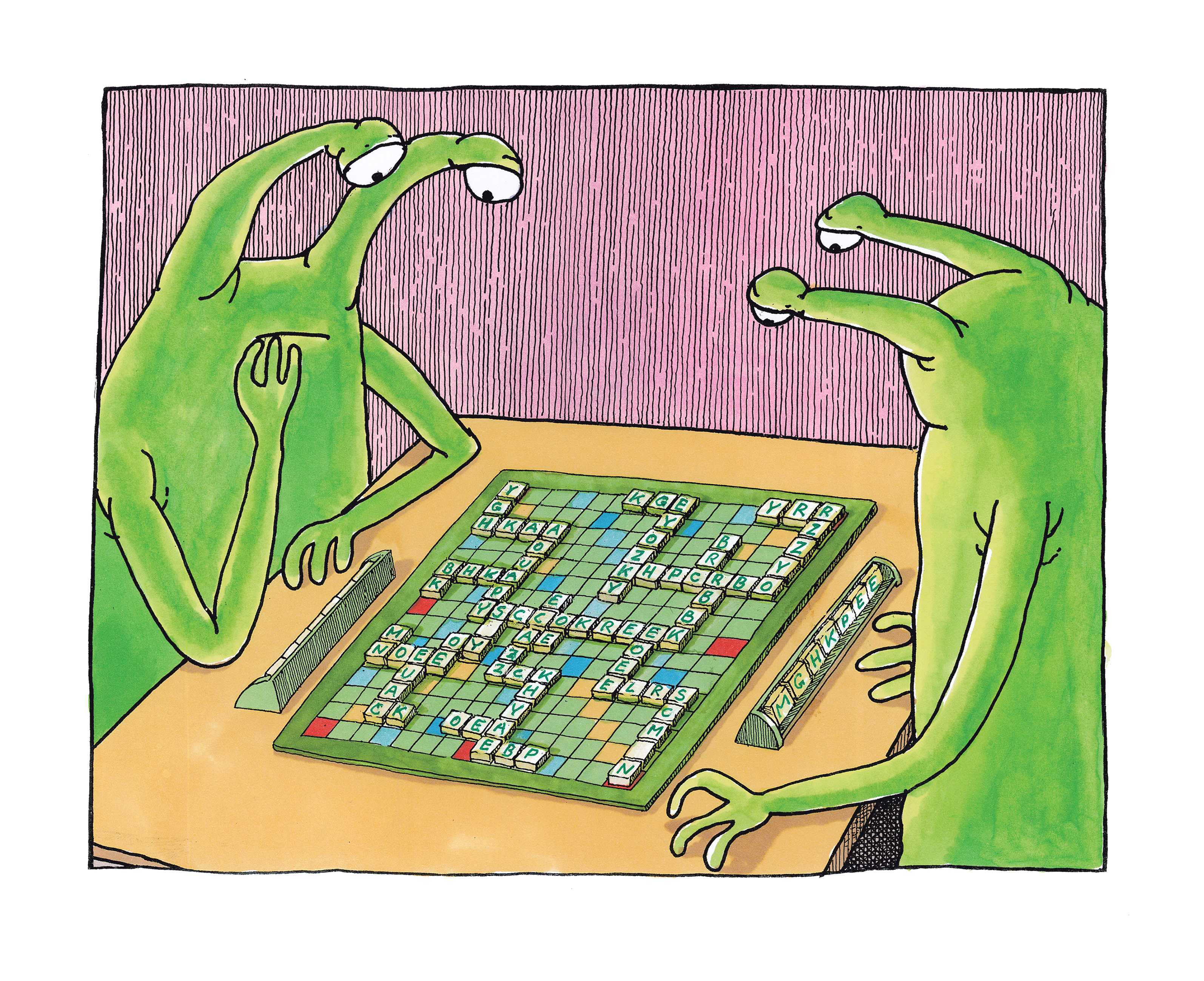
We have already seen it all. The internet, social media, and politicians’ efforts to control them both. But this was half a century ago.
“Who was the first president of the United States? 1) Abraham Lincoln, 2) George Washington, 3) Franklin Roosevelt. This may be flashed before a grade-school student one day on an electronic display panel […] The panel, composed of thousands of tiny lights sandwiched between glass sheets, operates when each light glows independently to form letters, numbers and patterns, like the bulbs of a billboard.” This was how Walter Tomaszewski opened his column in The New York Times on 6th April 1969. Further on, he wrote about the PLATO computer system (Programmed Logic for Automatic Teaching Operations). Thanks to PLATO, such panels as the one described above could be connected to a central computer collecting the answers submitted by students.
Back then, the world was a different place. In spring 1969, Bill Gates and Steve Jobs were both 14 years old, Apollo 11 was still preparing for the launch, and Władysław Gomułka was yet to receive the Jubilee Medal ‘In Commemoration of the 100th Anniversary of the Birth of Vladimir Ilyich Lenin’. Scientists from the University of Illinois had created an invention that was way ahead of its time, exceeding the imagination of its creators. PLATO offered incredible possibilities and brought us challenges that we’re still struggling with today. “All of the features you see kids using now, like discussion boards or forums and blogs started with PLATO,” reminisced Professor Donald Bitzer, now 87, often referred to as the father of PLATO.
The 2800-tube computer
Everything started with the baby boomers. Or, to be more precise, with their parents returning from World War II. The United States set up social programmes for veterans to help them make up for the lost time. In her book These Truths: A History of the United States, Jill Lepore explains that they were made possible by the legislative act known as the G.I. Bill, which “extended to the sixteen million Americans who served in the war a series of benefits, including a free, four-year college education, zero-down-payment low-interest loans for homes and businesses, and a ‘readjustment benefit’ of twenty dollars a week for up to fifty-two weeks, to allow returning veterans to find work.”
At the same time, population numbers in America skyrocketed: in 1950, 151 million people were living in the US; within a decade, the numbers had reached 179 million. The baby boom only made it clear that the country needed to introduce some changes in its education system. Building new schools turned out to be relatively easy (between 1940 and 1970, the number of schools across the country went up from 1500 to 2500). The real challenge was designing new and more effective teaching methods to best prepare employees for the changing market conditions.
The increasing social needs overlapped with the Cold War. In October 1957, the USSR launched Sputnik 1, which made the famous beeping noise upon reaching the Earth’s orbit. The Americans panicked. The Washington Post announced that “the United States could no longer proclaim the supremacy of its industrial machine or the capitalist free system of economics”, while The New York Times said it to be a shocker like Pearl Harbor. The American empire could not ignore the challenge, and thus had to enter the space race. “The Congress hereby finds and declares that the security of the Nation requires the fullest development of the mental resources and technical skills of its young men and women” was the opening sentence of the 1958 National Defence Education Act. According to the lawmakers, $200 million (a sum equal to $1.8 billion dollars today, inflation considered) were to be pumped into the education sector annually. At the same time, the National Aeronautics and Space Administration, known simply as NASA, was established. All over the United States, scientists began their search for solutions that would benefit education on the one hand and provide support for the space programme on the other.
Physicists, mathematicians, engineers and psychologists from the University of Illinois made it their goal to invent a new technology to support teaching and learning. However, several weeks later, they still had nothing and decided it was time to give up. When 26-year-old Donald Bitzer heard of his colleagues’ capitulation, he requested a few weeks to prepare the demo version of his project. “Back then, a shocking number of students, especially from the outside city centre, could graduate remaining virtually illiterate,” explained Bitzer. He wanted to develop an invention that would make learning more effective. To achieve that goal, he wanted to connect all students to one network that would allow them to participate in classes remotely.
Bitzer was not starting from scratch. Since 1952, there was ILLIAC I at the University, a two-tonne machine packed with 2800 vacuum tubes. Nowadays, we call it an ancient computer, even though it had no monitor or keyboard, and entering a command required much more effort than talking to Siri. One way or another, ILLIAC I was a state-of-the-art machine in its era, and Bitzer could do more than simply operate it – he knew how to make the most out of it.
“Special keys enable the student to control the presentation of material to him by the machine. The machine communicates with each student by means of closed-circuit-television,” wrote Bitzer in the 1962 issue of Computers and Automation, introducing PLATO. Back then, students could use a tool we would call keyboard today and react to what was happening on the screen, choosing between the ‘OK’ and ‘NO’ commands. If there was something they did not know, they could always go for the ‘HELP’ command instead. Over the next few years, new programmes for learning IT, mathematics, foreign languages, and several other subjects were developed to help students on various proficiency levels, from children who were only learning the alphabet to graduate students. At the same time, PLATO was becoming more beautiful. It received a plasma display, touch screen, a drawing programme.
Up until a certain point, Bitzer and his colleagues were following a plan that gave them control over their invention. But PLATO was based on a rather simple programming language that allowed its users to design new applications. And so, the PLATO engine became a platform for various mailing programmes, communication services, discussion groups, forums, and, of course – unsurprisingly, let’s face it – games. The games could be enjoyed in single-player mode or with other players. We will never be able to evaluate PLATO’s legacy as a whole. We will never know how many programmes were deleted and forgotten, and the creativity of both students and professors became legendary. What we do know is that PLATO was a platform on which the first shooting games were developed, as well as the first digital card games and RPGs. Those early productions were to inspire generations of inventors to come.
Saturday night massacre
Nowadays we know that if we make it possible to publish, let’s say, photographs, videos, or even just thoughts and comments limited to 280 characters, the platform’s users will go for it – and they will not be easy to control later on. Back then, however, this was not so obvious. “What do the participants in this discussion think about all of this: the firing of Cox, the chances of impeachment, and the possibility of connections between Watergate and political assassinations?” wrote Stuart Umpleby on Discuss, a conferencing programme on PLATO on 20th October 1973. The 29-year-old academic was already a graduate in Engineering and Politics, then working on his PhD thesis on modern communication methods. At the same time, he kept figuring out new ways of using PLATO outside of education; he even managed to secure a grant from the National Science Foundation (NSF) for this purpose.
In the 1970s, government-subsidized universities were already connected to the Pentagon-made ARPANET network, now considered the internet’s ancestor. However, those systems and – let’s call them that – applications were not compatible in any way. Discuss was a programme for exchanging opinions and ideas within PLATO, while ARPANET users had their own space called Forum. The users could not see each other there, even though the computers that operated both systems often stood right next to each other (or, to be more precise, they occupied neighbouring rooms). In his free time, Umpleby often went through the Sisyphean toil of rewriting the posts from one platform to another. It could be nothing but an anecdote showing the prehistoric state of the internet if not for the aftermath, which was not anecdotal at all.
Over that period, the US was boiling. American troops were still stationed in Vietnam, Bob Woodward and Carl Bernstein kept submitting new articles to The Washington Post, Richard Nixon’s ratings were plummeting, and it was becoming increasingly obvious that the White House was involved in Watergate. That particular autumn evening was a turning point: following Nixon’s instructions, special prosecutor Archibald Cox was fired from the Watergate case. Along with Cox, several of his superiors also quit. The Saturday Night Massacre, as historians call it, would have caused a scandal at any point in history, but not every era allowed people to broadcast their thoughts to friends and strangers.
Umpleby’s post ignited a fierce discussion. Participants wondered whether Nixon should be impeached and looked for clues that would link Watergate to the assassination of John F. Kennedy. Umpleby kept on rewriting all the entries between PLATO and ARPANET, but he also used both systems to organize a demonstration of students who believed Congress should impeach Nixon. A few days later, Professor Bitzer received a call from the National Science Foundation informing him that “money would disappear if this goes ahead”. Just as the conversation ended, his phone rang again. This time, it was the ARPANET management, letting Bitzer know he might be in trouble. Not only was Discuss in danger – the entire PLATO project was in trouble. After all, the project was fully dependent on the funds it received from government agencies. The Cold War and science were important, sure, but Nixon’s primary concern was his survival. By then, his administration was groping for straws – on the President’s request, it was trying to withdraw permission to broadcast from the television stations, owned by The Washington Post.
During the days that followed, Bitzer and Umpleby tried to introduce some safety measures in the dispute. They started by putting up a notice that while Discuss allows its users to exchange thoughts and opinions, political agitation is not permitted. It didn’t work – the Pentagon closed down Forum and withdrew Umpleby’s permission to access ARPANET. Simultaneously, Umpleby was declared persona non grata by the creators of PLATO, who worried that he might cause them to lose funding. It was too soon for a discussion about freedom of speech and the extent of impact the government can have on online conversations. The article “No Computer Talk on Impeachment”, published in Businessweek in the spring of 1974 (several months before Nixon’s removal), also failed to make an impact. Umpleby remained a liability; soon after, he transferred to George Washington University.
Even though PLATO was disconnected in 2006, the solutions it brought us still stand the test of time. After all, the ideas of the young postgraduate student from the University of Illinois came useful during the pandemic when students were forced to switch to remote schooling. Not to mention the mechanisms and threats it predicted humanity would struggle with five decades later.
When writing this article, I used the book The Friendly Orange Glow: The Untold Story of the PLATO System and the Dawn of Cyberculture by Brian Dear.
Translated from the Polish by Aga Zano










